#ArtCars
Weird Wheels: United Nude's 'Lo-Res Car' Up for Auction
If anybody has a soft spot for wedge designs and the automotive future envisioned during the 1970s, it’s yours truly. While mainstream vehicles being manufactured during the Malaise Era often left a lot to be desired, the concepts were sublime and led to some of the most unique-looking production cars in automotive history. I’m talking about cars like the Lancia Stratos, Lamborghini Countach, Lotus Esprit, BMW M1, De Tomaso Pantera, and DeLorean DMC-12. Toss in the digital dashboards that were gradually appearing in standard passenger cars during the 1980s and you’ve reached the point where I would probably claim automotive styling reached its zenith after a few stiff drinks. But I’ve been told by those who can distinguish fetishization from appreciation that those designs weren’t perfect and kind of look the same when there’s enough squinting is deployed.
Apparently, someone took that premise and used it as a template for a modern prototype intended to help sell shoes. Though the company focused entirely on the basic shape of wedge cars, settling on a vehicle that resembles what a Countach might have looked like in a video game from two decades ago should the assets fail to load. Known as the United Nude Lo-Res Concept Vehicle, it’s probably one of the more-unique automobiles ever built and it’s yours for the taking now that the Petersen Automotive Museum doesn’t want it.
Hyundai Pony Heritage Becomes Design Studio Centerpiece
While automotive enthusiasts have mixed opinions on the cultural clout of electric vehicles, there’s one aspect of electrification that’s undeniably cool — the resto-mod potential. Despite the historic appeal of driving around in vintage automobiles, they’re often painfully slow with ridiculously long braking distances and a lack of standard features many people living today would deem unacceptable. If you don’t believe me, select a random friend and ask them to parallel park a car without power steering or automatic transmission. Chuck in maintenance costs that are often well above average and it’s little wonder why so many Baby Boomers have been spending their retirement years outfitting the classic-era (or older) cars they grew up with with modern conveniences and components.
But we’ve also started seeing manufacturers (and even some intrepid entrepreneurs) taking the foundational concepts of resto-modding and adding electric propulsion. Some executions even seem to be pushing the boundaries of what we could effectively call automotive restoration, like Hyundai’s Pony Heritage EV.
This is Smart's Send-off for the Internal Combustion Engine
Before Smart goes all-electric next year, Daimler plans to offer “an exclusive and strictly limited special edition” model as a farewell to its combustion-engine vehicles. Designed by Konstantin Grcic, a man known for designing mass-manufactured minimalist furniture, the automaker says these limited-edition cars are for the “most ardent collectors only.”
Presumably, Daimler is referring to collectors in the general sense, as we’ve never heard of anyone with a devoted throng of Smart cars.
While it may sound like a bit of a turd, the company also said Brabus’ involvement was essential in developing the 21 models slated to roll off the assembly line in August of this year. That means more grunt and improved noises coming out of the back end — something we can all appreciate, be it in the bedroom or out on the open road.
The 1963 Volkswagen 'Light Bus' Is How You Do Automotive Art
With the 50th anniversary of Woodstock nearly upon us, it was only a matter of time before Volkswagen released a commemorative vehicle acknowledging the Microbus. The Type 2, a staple of the hippie movement, was frequently found painted in psychedelic patterns and hues. Case in point is the “Light Bus,” which appeared in numerous photos of the 1969 Woodstock Art and Music Fair — including the official Woodstock album — and became emblematic of the moment.
Driven by (and named after) the Baltimore-based band that drove it, the vehicle eventually vanished into obscurity.
Three years ago, artist Dr. Bob Hieronimus and Canadian documentarian John Wesley Chisholm sought to acquire the van, hoping to restore it to its former glory. Unfortunately, a six-month search turned up no trace of the van, so the two made do with an unmolested 1963 VW Standard Microbus sourced via a crowd-funding campaign. It may not be the Type 2 that attended the historic music festival, but the attention to detail here barely makes that an issue.
Sole of the UX: Crossover Cross-branding at Its Worst?
Lexus unveiled a collaboration with Nike and designer John Elliot at New York Fashion Week, celebrating both human and automotive footwear. The finished piece, titled “Sole of the UX,” is scheduled to make additional appearances across the country later this year, touring with a matching pair of Nike AF1 shoes.
After conducting a bit of research, Elliott appears to be a fashion designer specializing in the least imaginative streetwear ever to enter mass production. His beige drawstring pants, which run about $200 USD, are probably the most creative item in his entire catalog. The brunt of his collection involves plain shirts and lots of faded denim.
While not hideous by any means, it’s devoid of any unique style. The articles of clothing Elliot specializes in are the kind of pieces you’d wear while running errands or relaxing at home. They just cost a lot more. However, as Elliot openly describes his take on fashion as intentionally “basic,” there’s little reason to get ultra salty over how so much of his fashion line resembles a high-quality burlap sack. Instead, let’s focus our collective ire on Lexus.
Creative Liveries: Lexus Brings Art LFA to 24 Hours of Spa
Art cars kind of suck. Even though BMW has managed to produce a handful of stellar examples — models enhanced by Jeff Koons, Roy Lichtenstein, Frank Stella, Alexander Calder, and Andy Warhol — plenty of the brand’s artistic liveries have been far less appealing to the layperson.
Other companies have produced art cars as well. Last year, Lexus unveiled an incredible IS sedan covered in 41,999 programmable LEDs that created a perpetually changing and utterly hypnotic visual experience. However, its most recent example left me feeling a little empty inside.
Art is subjective, I know. But, when it’s slathered all over an automobile, you want it to be expressive of the car’s personality — or at least striking in a way that becomes transformative. The LFA Lexus brought to the Total 24 Hours of Spa race this weekend does neither. Frankly, it feels one step removed from purchasing some mass produced vinyl graphics off an online retailer and sticking them wherever.
Junkyard Find: 1987 Volvo 740 Turbo Art Car
Since I’ve built (and daily-driven) what I consider to be an art car, I’m not against the concept of an art car. The problem is that you get 100 random-beater-with-army-men-hot-glued-all-over art cars for every brilliant Sashimi Tabernacle Choir. Because affixing random crap all over a cheap car is an accepted route to a certain segment of San Francisco Bay Area artistic circles, I’ve found a fair number of these things in Northern California wrecking yards. Here’s the first turbocharged art car I’ve seen in my travels.
Junkyard Find: 1985 Toyota Master Ace Art Car
If you live in the San Francisco Bay Area and you need something to drive to Burning Man, you’ll find that the glue-a-bunch-of-stuff-all-over-a-random-vehicle art-car approach will let your ride fit in just as effortlessly on the playa as the soccer mom’s Voyager blends in at the mall parking lot. I’m not against art cars (I consider my 1965 Impala Hell Project to be an art car at heart), but I prefer the approach of the artists who built such fine machines as the Sashimi Tabernacle Choir or the street-driven Denver Pirate Ship to the type who feels contempt for the canvas disappearing beneath their hot-glue gun. Anyway, the upshot of the large number of Bay Area art-car types who glue 10,000 plastic army men or Lucky Lager caps all over their cars is that many of them wind up in self-service wrecking yards. Here’s a Toyota Master Ace aka Toyota Space Cruiser aka Toyota Van that I spotted last weekend at an East Bay self-serve yard.
Once-Famous Mustang Art Car Falls On Hard Times, Faces Crusher
After judging at the Arse Freeze-a-Palooza 24 Hours of LeMons near Bakersfield, I headed north to visit my family in the San Francisco Bay Area before heading back to Denver. Naturally, I had to stop by at least one junkyard, and— small world!— I ran into a car that looked very familiar.
1965 Impala Hell Project, Part 17: Crash Diet, Frying Tires at the Dragstrip
After dropping the hopped-up 406 small-block I’d built from scratch in place of the worn-out 350 I’d swapped in 1990, I was geared up to take the car to the dragstrip and see if I could better the high-16-second ETs I’d managed in Atlanta; an important part of this process involved stripping a lot of unnecessary weight out of the car. At the same time (early 1999) I was reevaluating the Impala Hell Project’s role in my life, and thinking about how I might best realize my original vision for the car which had gone from art project to daily driver.
1965 Impala Hell Project Part 2: The Modifications Begin
In Part 1 of this series, I described the purchase of a 1965 Chevrolet Impala in early 1990, for use as the raw material in a complex performance/installation art piece. Within a single day of taking ownership of the car, I began the process of modifying it to suit my artistic vision.
1965 Impala Hell Project Part 1: So It Begins
As I explained in the introduction to this series last week, I’m finally tackling the story of the most significant car I’ve ever owned. This ’65 Impala went through ten years, 100,000 miles, and many conceptual shifts during its time with me, but it all started out as my attempt to make an art car that wasn’t A) lame and B) contemptuous of the idea of the car itself.
Art Car to Daily Driver to Drag Racer: 10 Years of My 1965 Impala Hell Project
I put in four years and thousands of posts at Jalopnik, writing about most of my formative cars… but never once did I write the story of the car that served me longest, gave me the most miles, endured the most engine swaps, and generally laid claim to a bigger piece of my heart than all the rest of my motley lifetime fleet combined: a 1965 Chevrolet Impala sedan, built at the long-defunct South Gate Assembly Plant in Los Angeles, equipped with a 283/Powerglide drivetrain, and painted Artesian Turquoise. Today, at last, the story begins.
What's Wrong With This Picture: HUMMER Goes Green Edition
Artist Jeremy Dean goes “Back To Futurama,” with this “horse-drawn testament to the collapse of the auto-industry.” [via animalnewyork.com, HT Richard Chen]
Curbside Classic Outtake: Art Cars (Don't) Suck
Creativity means to explore new avenues of expression. In the thirties, forties and fifties, old cars were the clay that inspired new forms of creativity for the hot rodders and customizers. By its nature, creative expression was always changing, and 1953’s hot ticket was stale bread by 1958. The sixties were the blowout, led by crazies like Ed Roth. But by the seventies or so, the truly creative period was over, and it soon became a big-bucks business dominated by the Chip Fooses of the world. Glitzy eye candy, but don’t try this at home kiddies! No wonder there was a revival of rat rods, and the art car scene blossomed. Younger and/or artistic folks have always needed to test the sensibilities of the establishment, so if the goading words on this bumper have done their thing, and this turns you off, it’s been a roaring success.





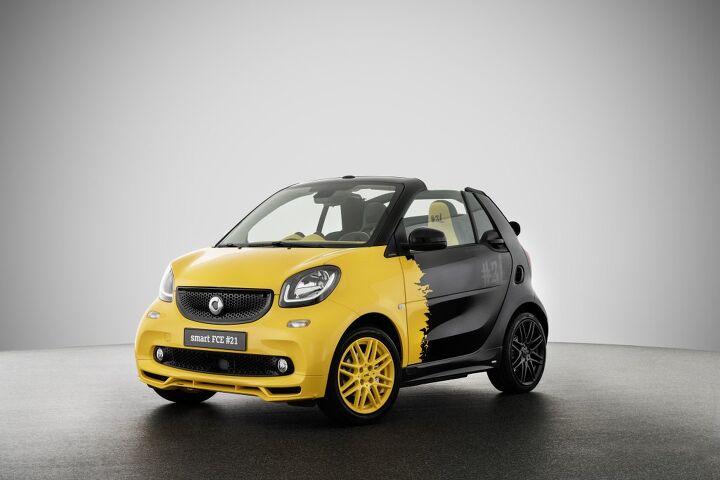




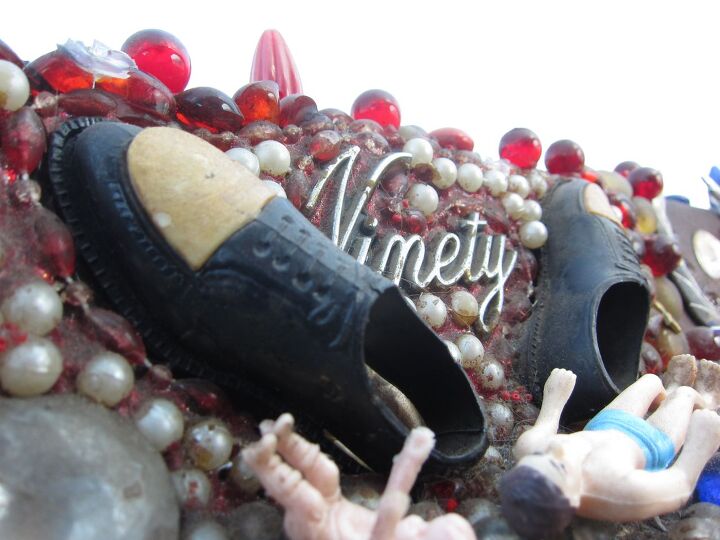

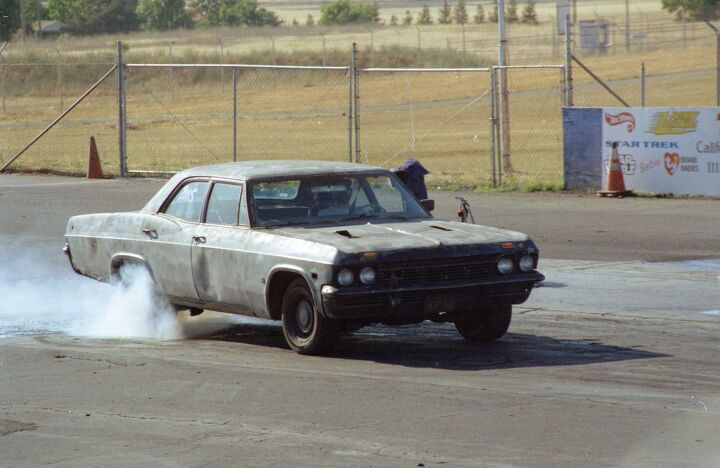

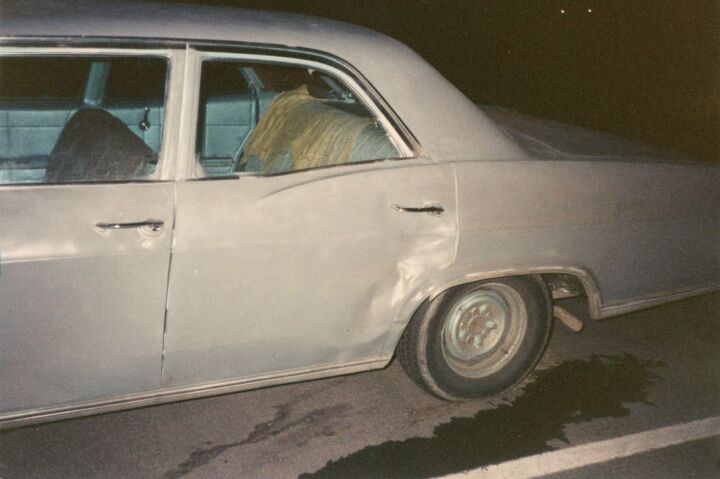


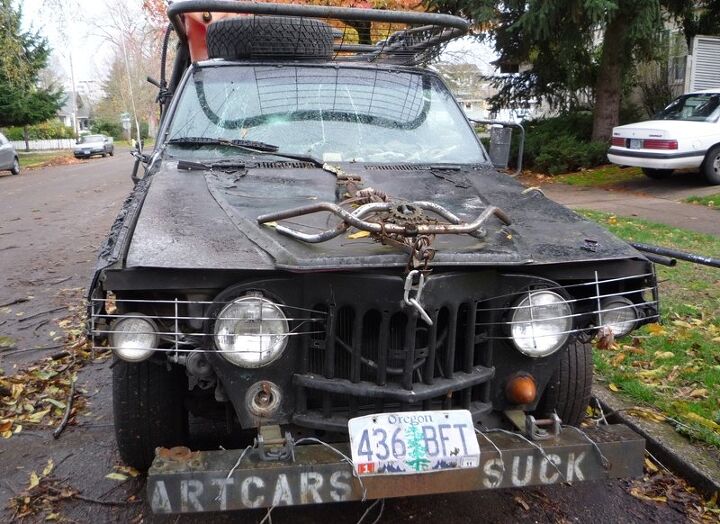











Recent Comments